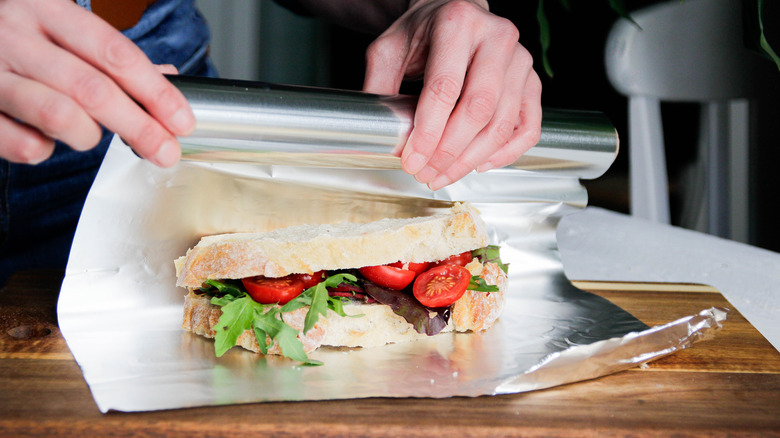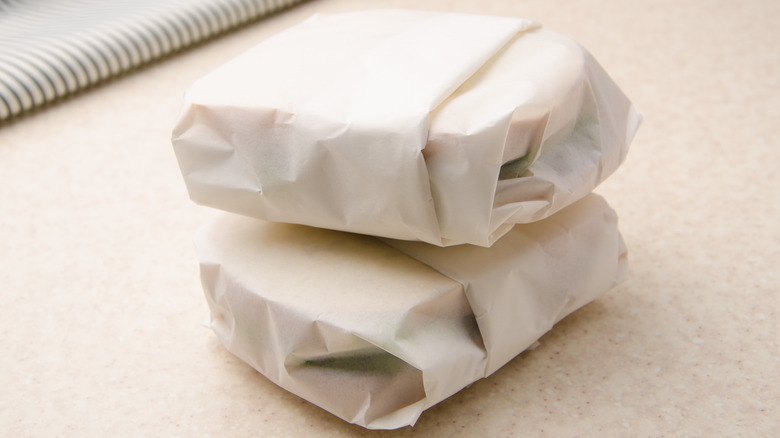Why You Should Think Twice About Wrapping Certain Sandwiches
Wrapping sandwiches is an easy alternative to putting them in a plastic bag or a reusable container, and provides an extra layer of protection even if you do bag it. But wrapping doesn't just keep the sandwich together and make it easier to eat on the go — it also traps in heat and moisture and compresses it into a slimmer shape. This can be an advantage or create certain risks, depending on the sandwich in question.
Even if your sandwich isn't hot when you wrap it, your layer of cling film still keeps things warmer than usual, and some squishing action definitely happens before and after. For a panini, this can help keep the sandwich warm and melty, but it can be detrimental for moist sandwich fillings packed between soft breads. For example, tuna salad is an extremely moist filling. If it's spread over soft, pre-sliced sandwich bread and tightly wrapped, that moisture not only lacks a chance to escape, but also gets compressed into the bread, squeezing it out and making the whole sandwich soggy.
Ultimately, if wrapping doesn't directly benefit your sandwich or how you will eat it, you may want to think twice. It may look nice sitting in your lunch box, but it impacts more than just your meal's appearance. If you do decide to wrap a sandwich, there are some best practices that can help minimize sogginess and keep it fresh.
Best practices for wrapping sandwiches
While there's no exact science to wrapping a sandwich, the more moist the filling is and the softer its bread, the faster it grows soggy. This is why one of the best ways to avoid soggy picnic sandwiches is to start with the bread itself. It's far more difficult to saturate a rustic, thick-crusted loaf than a grocery-bought pack of white bread, for example. Also, the thicker each slice is, the harder it will be for moisture to compromise its texture. Try using something with a thick crust and soft interior, like ciabatta or country loaves.
You can also use parchment paper, aka the best way to wrap a sandwich so it doesn't get soggy, thanks to it being so porous. On top of allowing moisture to escape to some degree, it also won't squeeze your sandwich quite as tightly as plastic cling wrap or aluminum foil. This keeps your 'wich in its original shape and avoids pressing your bread down on your chicken salad, juicy tomatoes, or wet condiments.
If you're wrapping a hot sandwich, keep in mind that the excess steam will eventually hinder its texture. Similar to the ice cube trick for grilled cheese, a little bit of steam evenly melts the cheese while melding all the ingredients into a solid mass. However, too much makes the bread go from soft and fluffy to a soggy mess. Let your sandwich cool down for a few minutes before wrapping it.


